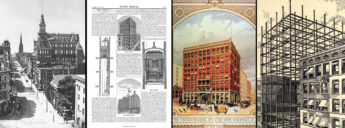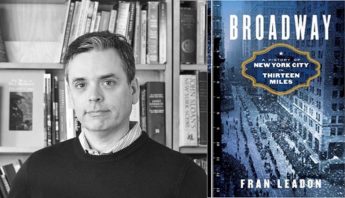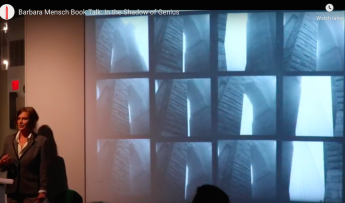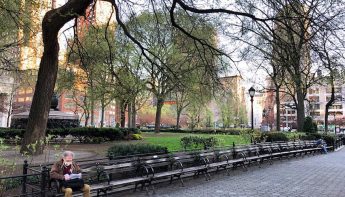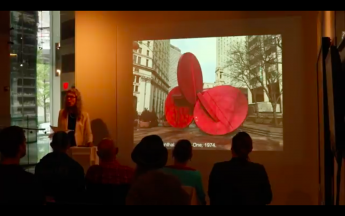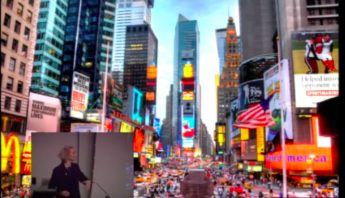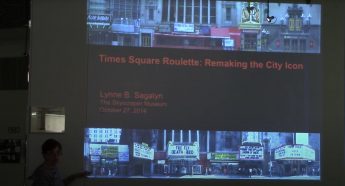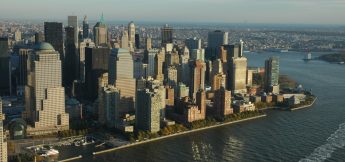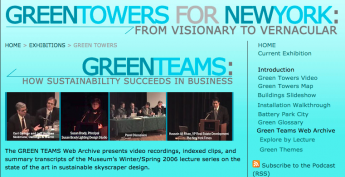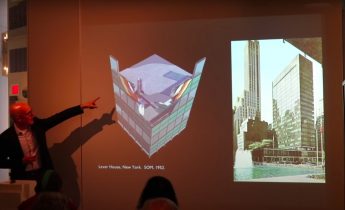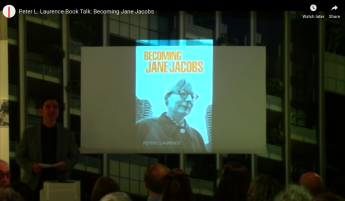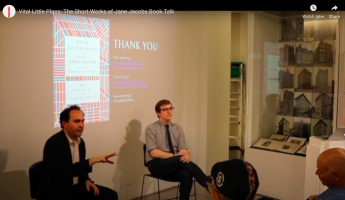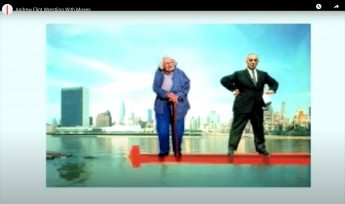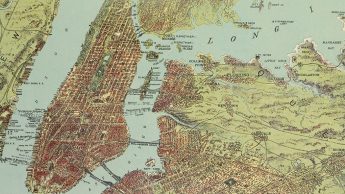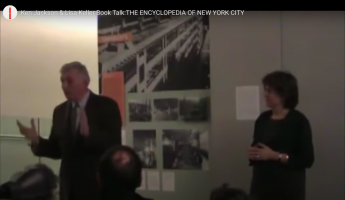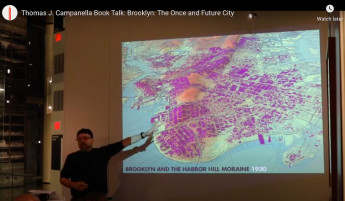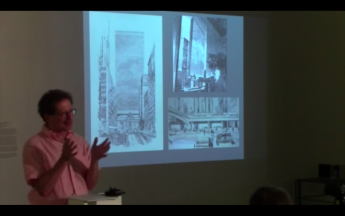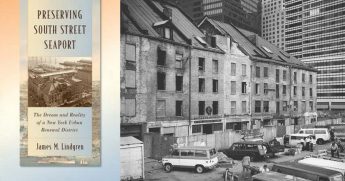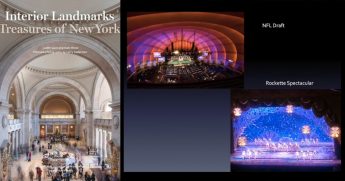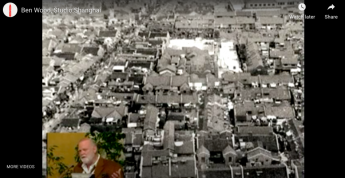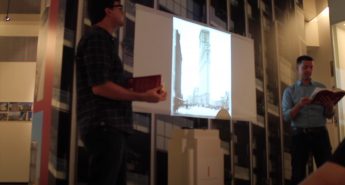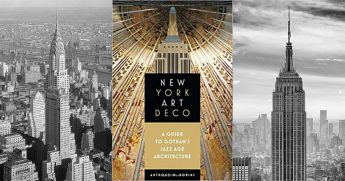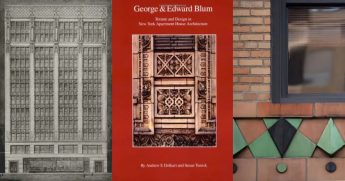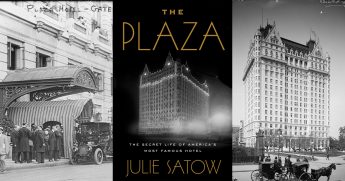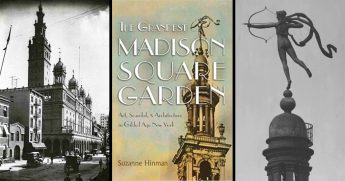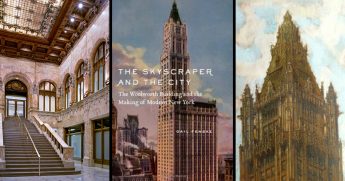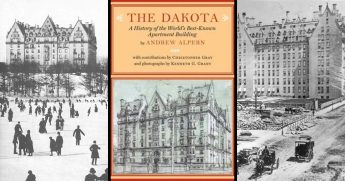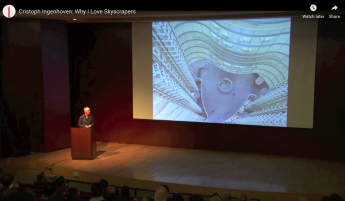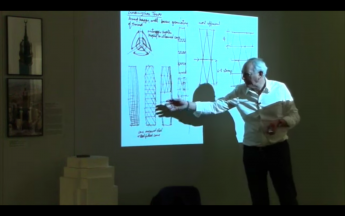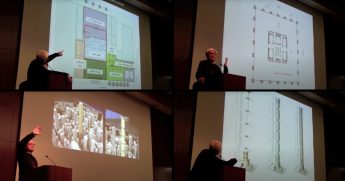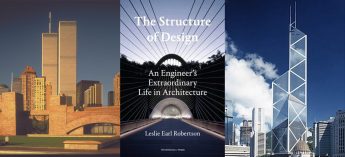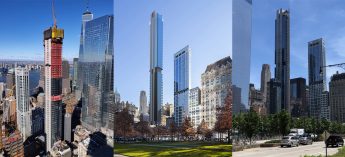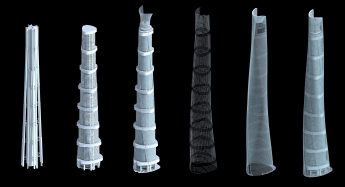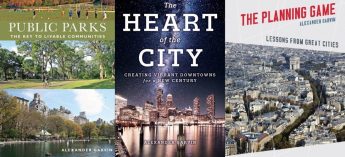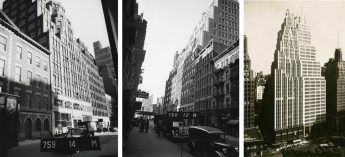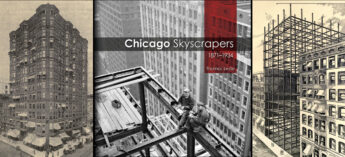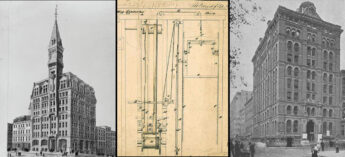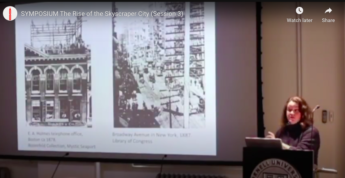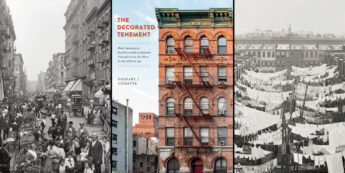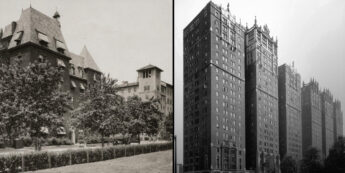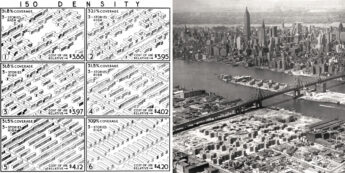Lecture Videos: Curated Series
The Museum’s menu of Past Programs features videos authors’ talks, lectures, and symposia that explore tall buildings and cities – especially New York – from multiple perspectives. This page compiles past programs into curated series.
This symposium presents thirteen related webinars by leading architects, engineers, and construction experts, conceived as an online course that covered key issues in the 21st-century development of the supertall typology. The lectures extended the analysis of the Museum's exhibition SUPERTALL! 2020.
Rewriting Skyscraper History
This evolving symposium engages an established group of scholars – all of whom have all specialized in some aspect of skyscraper history and have collaborated on some of the Museum’s earlier programs – to consider broad questions about the early history of the type without falling into persistent 20th-century narratives, including an emphasis on “firsts;” rivalries over stylistic expression; or competition for superlative height and lists of tallest buildings. Instead, we will consider the lags and learning curves often inherent in the adoption of new technologies into established systems of supply, construction, codes, and other factors.
Celebrating New York's Great Streets and Public Spaces
Fran Leadon: Broadway
New York's great streets and public spaces, though now fallen quiet, are still resonant with history. We began with Fran Leadon’s June 2018 talk on his book Broadway: A History of New York City in Thirteen Miles.
Barbara Mensch: Brooklyn Bridge
The majestic presence of the Brooklyn Bridge was the subject of a richly illustrated talk by photographer and author Barbara Mensch in October 2018, when she discussed her new book In the Shadow of Genius: the Brooklyn Bridge and Its Creators. A longtime resident of the South Street Seaport neighborhood, Mensch pairs her own striking photography of the bridge with the history of the remarkable Roebling who envisioned and saw through its construction.
Joanna Merwood-Salisbury: Union Square
Union Square was the subject of the October 2019 lecture by Joanna Merwood-Salisbury on her new book Design for the Crowd: Patriotism and Protest in Union Square. Since it was laid out in the mid-19th century, Union Square has served as a microcosm for the ongoing debates about the proper usage of urban public space.
Michele Bogart: Sculpture in Gotham
An overview of the place of public sculpture was the subject of Michele Bogart in a talk in July 2018 based on her book Sculpture in Gotham: Art and Urban Renewal in New York City. A professor of art history and criticism at Stony Brook University who served on the NYC Art Commission from 1998 to 2003, Bogart described how the City of New York became committed to public art patronage in the mid-1960s, when cultural activists and City officials for a time shifted away from traditional monuments and joined forces to sponsor ambitious sculptural projects as instruments for urban revitalization.
Times Square
In November 2014, in connection with our exhibition Times Square, 1984: The Postmodern Movement, the Museum organized a program, presented in collaboration with the Historic Preservation program of GSAPP at Columbia, titled Sense of Place: Reflections on Preservation in Times Square. The evening brought together key players from the 1980s fight to preserve both the physical fabric and economic engine of the Theater District and the spirit of Times Square, Kent Barwick, Laurie Beckelman, Cora Cahan, Jack Goldstein, and Lee Harris Pomeroy.
Lynne Sagalyn: Times Square, Again
Times Square is empty these days, but it’s not dark. Indeed, the lights on Broadway may be brighter than ever in LED. The previous talk, Sense of Place: Reflections on Preservation in Times Square, showed how concerned New Yorkers came together to help preserve and reinvent Times Square. The origins and conditions of the problems that government tackled with its plans were analyzed in the 2001 book by Lynne Sagalyn Times Square Roulette, which she discussed in a talk at the Museum in October 2014.
Sustainability & Skyscrapers
In honor of Earth Day week, the Museum focused our next series on skyscrapers and sustainability. We caught the wave of the green building movement early, and in 2006 presented the exhibition Green Towers for New York: From Visionary to Vernacular. That show pointed out a promising trend: the early adoption and leadership of New York architects, engineers, and some developers in applying the logic of sustainable design to the most competitive and expensive market in America, New York’s commercial and residential architecture.
That show may be a bit dated now, but in fact it’s a great archive of the early history of greening strategies in the commercial real estate market where “return on investment” (ROI) is paramount. An important part of the Museum’s effort to promote sustainability was the lecture series Green Teams: How Sustainability Succeeds in Business. Eight panel discussions brought together thirty leading professionals, including developers, architects, engineers, environmental consultants, and government officials. Highlighting the creative collaboration among clients and designers, each program explored a major tower project or architectural practice, public policy issues, and questions for the future. You can find the original entry portal for the series here.
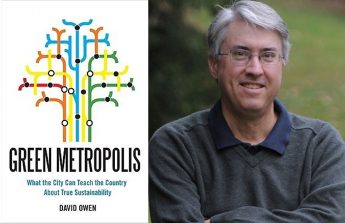
David Owen: Green Metropolis
Back in 2009, writer David Owen gave a slide-free talk on his new book Green Metropolis: Why Living Smaller, Living Closer, and Driving Less Are the Keys To Sustainability, in which he argued logically that cities are the most energy-efficient lifestyle. If you have ever wondered what this engaging New Yorker writer looks and sounds like, you can find out in this amusing and enlightening video.
Likewise, for this particular Earth Day week – the fiftieth! – it's good to remember the enduring logic and necessity of cities for our sustainable global future.
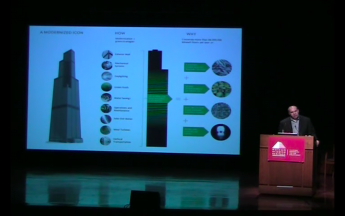
Gordon Gill: GREEN GIANTS
On April 22, 2010, the 40th anniversary of Earth Day, the Museum presented GREEN GIANTS, a program about plans to “green” two of history’s biggest and greatest skyscrapers, the Empire State Building and Sears/ Willis Tower. Speakers included Gordon Gill, architectural partner at Adrian Smith + Gordon Gill, who designed the strategies for cutting energy consumption and creating better interior environments for the 1970s Sears Tower, and Dana Schneider of JLL, who advised on the modernization of systems for the Empire State Building. Commenting and moderating the Q & A is Rohit Aggarwala, then the head of the Mayor’s Office of Long-term Planning and Sustainability for the Bloomberg Administration.
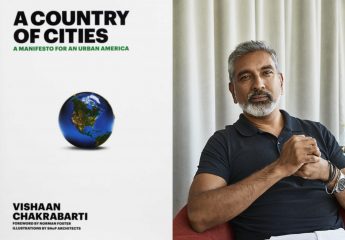
Vishaan Chakrabarti: A Country of Cities. A Manifesto For An Urban America
In February 2014, architect and planner Vishaan Chakrabarti spoke at the Museum about his book A Country of Cities, which argues that well-designed urban density is the key to solving America’s great national challenges: environmental degradation, unsustainable consumption, economic stagnation, rising public health costs, and decreased social mobility.
On Earth Day week, in the midst of the COVID crisis, Chakrabarti's message that living with smart density can bring economic, social, and environmental benefits for us all needs attention and reinforcement.
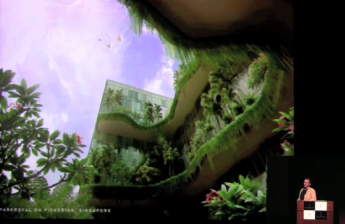
WOHA: Breathing Architecture
In 2012 architect Richard Hassell – half of the partnership of the Singapore-based firm WOHA – gave a lecture on their work entitled Breathing Architecture. In 2016, the Museum presented the exhibition Garden City | Mega City on WOHA’s work. For Earth Day week, we suggest the talk and a virtual tour of the exhibition as a way to be inspired by how nature can be integrated into urban architecture applying sustainable and equitable goals.
Celebrating New York's Great Buildings
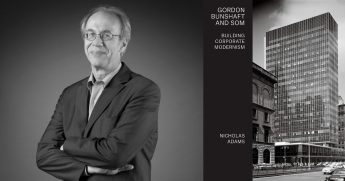
Nicholas Adams: Gordon Bunshaft
Architectural historian and Vassar professor Nicholas Adams presents a talk on his book Gordon Bunshaft: Building Corporate Modernism. In 1952, Bunshaft’s landmark design for Lever House reshaped the Manhattan skyline and elevated the reputation of Skidmore, Owings & Merrill (SOM), the firm where he would spend more than 40 years as a partner. Adams argues that the architect’s work represented a tension between his ambition for acclaim as a singular artistic genius and the collaborative structure of SOM’s architectural partnership.
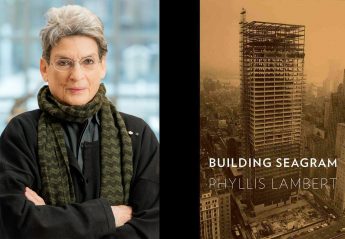
Phyllis Lambert: Building Seagram
In December 2013, Phyllis Lambert spoke at the Museum about her new book Building Seagram, a personal and scholarly history of the design and construction of Mies van der Rohe's modernist masterpiece, the Seagram Building. The skyscraper was commissioned by Lambert's father, Samuel Bronfman, founder of the Canadian distillery dynasty Seagram. At age twenty-seven Phyllis took over the search for the project’s architect, selecting Mies for the commission and working with him on the evolution of the design. Lambert recounts the ultimate insider’s view of the debates, resolutions, and dramas of the building’s construction, as well as its crucial role in the history of modern art and architectural culture.
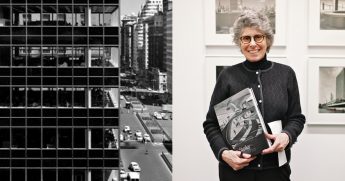
Erica Stoller: The Photography of Ezra Stoller
In November 2013, occasioned by her new book Ezra Stoller Photographer, written with Nina Rappaport, Erica presented a gloriously illustrated talk on the work of her father, Ezra Stoller, the dean of American architectural photographers. Ezra Stoller’s commercial work for architects, developers, and publishers helped define the image of postwar corporate modernism, especially through the new generation of sleek glass towers along Park Avenue. In her talk, Erica shared many rarely seen images of models, construction shots, and finished views and pointed out how, looking beyond the content, one can begin to understand the photographer’s decisions about where, when, and how the images were made.
Tom Leslie: Towards the Glass Box
This week’s series of highlighted talks has brought together videos of scholars of New York’s signature High Modern high-rises. But what were the origins of this “triumph of transparency?”
As architect and professor Thomas Leslie explained in his November 2019 lecture, the ubiquitous “Glass Box” skyscrapers of the postwar era have a surprisingly opaque history. In this video, Leslie asks: “where did the glass skin come from?” Leslie shows how lighting, air conditioning, and glass technologies developed in the decades before Lever House and Seagram.
Jane Jacobs Birthday Week
Peter Laurence: Becoming Jane Jacobs
We begin our series with Peter Laurence, a professor at Clemson University School of Architecture, who on May 4, 2016 spoke about his new book Becoming Jane Jacobs, a study that gum-shoes Jacobs’s first years as a writer and resident in Depression-era New York to unearth a fascinating origin story. As urban historian Robert Fishman observes in his book blurb: “Jane Jacobs taught the world to perceive the city with new eyes, but she first had to teach herself to see. In this superbly researched and wonderfully original book, Peter L. Laurence for the first time reveals the depth and complexity of Jacobs’s self-education.
Samuel Zipp and Nathan Storring: Vital Little Plans
Continuing our probe into the “genius of Jane” during her birthday week, we highlight a 2017 talk by two scholars of her work, Samuel Zipp and Nathan Storring, who collaborated to edit Vital Little Plans, a book that examines important, but little-known essays by Jacobs. While many know her defense of traditional urbanism and local economies, Zipp and Storring argue that Jacobs was also a futurist whose ideas she intended to apply to larger urban systems. Tracing Jacobs’s activism both in New York and in her second city, Toronto, they point to her later work there to reform zoning, promote diversity, and build more.
Anthony Flint: Wrestling With Moses
Wrestling With Moses: How Jane Jacobs Took On New York’s Master Builder and Transformed the American City is the self-explanatory title of a lively biography of Jacobs by writer Anthony Flint. His 2009 talk at the Museum frames a now-famous story of how Jacobs frustrated Robert Moses’s multiple attempts to ravage her Greenwich Village neighborhood with his plans for highways and urban renewal. Flint makes clear Jacobs’s brilliance as an activist organizer and a PR genius for her cause. Her skirmishes with Moses foiled his plans, but her true triumph was to prove that the book was mightier than the bulldozer.
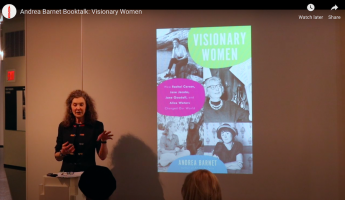
Andrea Barnet: Visionary Women
"Changed Our World" is a big claim for the influence of any one person, and it's an assertion not often made about women. Yet writer Andrea Barnet found four females of which it is true, and she gathered them in a group biography Visionary Women: How Rachel Carson, Jane Jacobs, Jane Goodall, and Alice Waters Changed Our World.
In May 2019, Barnet gave a talk that traced the arc of each woman's career in the 1950s and 60s, placing their calls for a new way of seeing and thinking- one that emphasized systems and interconnectedness- at the beginning of countercultural revolutions. Barnet focused her talk on our favorite urbanist Jane Jacobs and her 1961 book The Death and Life of Great American Cities and Rachel Carson's 1962 Silent Spring, which helped launch the environmental movement.
Sweeping Surveys
Mike Wallace: Greater Gotham
“Authoritative” and “encyclopedic” are adjectives that must be earned, and this week’s reprise of talks on New York City history definitely qualify. We start the series with a lecture by Mike Wallace, who won the 1999 Pulitzer Prize in History for the sweeping survey Gotham, written with the late Edwin G. Burrows. In November 2017, he spoke about his new book, Greater Gotham, which doubles down on detail to cover just two decades – from the consolidation of the five boroughs in 1898 to the end of WW1. Wallace favored the audience with a lively narrative overview of the 1200 pages of his tome, as well posed a series of questions and speculations about the emergence of the skyline as an expression of the “consolidation ethos.”
Kenneth T. Jackson and Lisa Keller: The Encylopedia of NYC
In February 2011, the Museum hosted an insiders evening on The Encyclopedia of New York City: Second Edition with its editor in chief and mastermind Kenneth T. Jackson and Lisa Keller, its Executive Editor, a historian and professor at SUNY Purchase. At 2 million words and 5,124 entries, the 21st-century second edition added 800 new entries to the 1995 classic and considered sweeping changes, including the city’s reversal of fortunes with both the impact of 9/11 and the urban regeneration of many city neighborhoods. Ken and Lisa gave insights into the creative and critical issues they faced in organizing and editing a portrait of our protean city.
Thomas Campanella: Brooklyn: The Once and Future City
Presenting another expansive history, this time focused just on Brooklyn, we again call attention to a terrific talk by Thomas Campanella from January 2020 on his new book Brooklyn: The Once and Future City. Tom's richly illustrated lecture spanned the creation of the borough's topography by the ice-age terminal moraine and out-wash plain and the resulting planned and constructed landscapes. Highlighting a series of grand schemes, visions, and rackets that either shaped or escaped Brooklyn’s history, from Frederick Law Olmsted's Prospect Park to Steeplechase Park at Coney island, where his uncle was a general manager, Tom's book and talk weave urban, architectural, planning, social, and even personal history into an enormously engaging mix.
Historic Preservation Series
Andrew S. Dolkart: Saving Place
Fifty-five years ago last month, on April 19, 1965, Mayor Robert F. Wagner Jr. signed the law that established the New York City Landmarks Preservation Commission (LPC). This week's series of talks explore the values of Historic Preservation and the incremental, often political, and frequently litigious actions that expanded the protections that today extend to more than 31,000 properties. In July 2015, Andrew S. Dolkart offered an insightful history of the earliest years of the Commission and its initial judgments and biases for designations. He also reviewed the meager history of skyscraper designations in the first quarter-century of the LPC and highlighted the threat of the proposal for a towering slab designed by modernist Marcel Breuer intended to rise above Grand Central Terminal that led to a U.S. Supreme Court decision that upheld the constitutionality of the Landmarks Law.
Dr. James M. Lindgren: Preserving South Street Seaport
The creation of South Street Seaport Museum in 1966, the year after the legislation that established New York's Landmarks Preservation Commission, is a story of both historic preservation and urban regeneration – or at least attempts to integrate those goals. In 2016, Dr. James M. Lindgren, a historian of America’s maritime heritage and its preservation, spoke about his book Preserving South Street Seaport. He explained how preservationists mobilized to save the last piece of lower Manhattan’s old port and how successive city administrations maneuvered to find an economic model that could both sustain the maritime museum and produce a revenue stream for the land and buildings.
Judith Gura and Kate Wood: Interior Landmarks
New York City added interiors as a category for Landmark protection only in 1973, eight years after the creation of the Landmarks Preservation Commission. In November 2015, the authors of Interior Landmarks: Treasures of New York, the late Judith Gura and Kate Wood presented a richly illustrated talk on their survey of many of the city's most spectacular interiors, including the Art Deco lobbies of the Chrysler and Empire State buildings, the cathedral-like Woolworth Building, and the glorious Radio CIty Music Hall. They also explained the many challenges to designating and preserving these landmark interiors.
Ben Wood: Preserving Shanghai
And now for something completely different... In 2009, Ben Wood, the American architect of Shanghai's earliest and most significant preservation and adaptive-reuse development, the famous Xintiandi, presented a talk entitled “Preserving Shanghai: Modernizing Urban Identity” on the inspiration and realization of his 1998 project. Working for the enlightened Hong Kong developer Vincent Lo, Wood devised a plan to preserve the scale, sense of place, and some of the historic buildings of the neighborhood of traditional li-long housing. Shanghai's Xintiandi, a term that means “New Heaven and Earth,” has enjoyed fabulous popular and commercial success and has spawned a series of similar developments in Chongqing, Wuhan, and other Chinese cities.
Rediscovering New York
The Bowery Boys: Adventures in Old New York
In August 2016, The Bowery Boys, Greg Young and Tom Meyers, co-founders of the wildly popular podcasts, regaled an audience of their fans with an engaging talk on their first book Adventures in Old New York. Greg and Tom described the backstory of their series and working method, then tag-team read selections on some favorite early skyscrapers.
Anthony Robins: New York Art Deco
In July 2017, Anthony Robins, popular leader of walking tours all over the city, synopsized his several decades of devotion to Deco architecture in a lively lecture on his new book New York Art Deco: A Guide to Gotham’s Jazz Age Architecture. Tony explained the evolution of the "skyscraper style" that emerged in Manhattan's commercial architecture in the mid-1920s and reached its zenith by the early Thirties in the Chrysler, Empire State, Cities Service, and RCA buildings, among a chorus of others that remade the skyline in the image of modernity.
Susan Tunick and Andrew Dolkart: George and Edward Blum
In 2012, Susan Tunick and Andrew Dolkart, self-described "Blum addicts" and co-authors of a book, George & Edward Blum: Texture and Design in New York Apartment House Architecture, spoke on the little-known (until they discovered and celebrated them!) architects of many of the city's under-the-radar residential gems. In their talk Tunick, the world's expert on architectural terra cotta and Dolkart, who was the guest curator for the Museum's 2012 exhibition URBAN FABRIC, expanded their studies of the Blum brothers into the firm's commercial architecture, much of which was constructed in the Garment District.
New York Icons
Julie Satow: The Plaza Hotel
A great hotel is a theater of dreams,” noted Tina Brown in her review of The Plaza:The Secret Life of America’s Most Famous Hotel, continuing, Julie Satow “digs deep into the forces that took the Plaza from a living center of aspiring social connection tied to the fortunes of American high society to its present status in an atomized era of pitiless transactional globalism.” It's hard to top that summary of the building and the book (which has just been released in paperback!). In August 2019, Julie Satow, an award-winning journalist who has covered real estate in New York City for more than a decade, shared colorful episodes in her talk about the famous hostelry.
Suzanne Hinman: The Greatest Madison Square Garden
In a September 2019 talk on her book The Grandest Madison Square Garden: Art, Scandal, and Architecture in Gilded Age New York, art historian Suzanne Hinman limned the roles of the key figures in the creation of the complex, architect Stanford White and sculptor Augustus Saint-Gaudens. When completed in 1890, the (second) Madison Square Garden, at the northeast corner of Manhattan’s posh Madison Square, boasted arguably the tallest tower in the country, measuring 319 ft. Hinman focuses on White’s struggle to construct the building, its reception, and destruction in 1925 to make way for the New York Life Building.
Gail Fenske: The Woolworth Building, Highest in the World
In May 2013, art historian Gail Fenske, author of the definitive book on the Woolworth Building, The Skyscraper and the City: The Woolworth Building and the Making of Modern New York, offered the talk “Highest in the World," explaining how the commission grew from modest plans for a 20-story office building to its supreme height. From client Frank W. Woolworth’s disjointed process of parcel acquisition to architect Cass Gilbert’s sequence of designs, the tower grew to 792 feet high to command both the skyline and the attention of the world.
Andrew Alpern: The Dakota
The Dakota was the city’s first true luxury apartment house, and it remains the gold standard against which all others are weighed. Andrew Alpern, expert on New York's palatial apartment houses, presented a talk on his new book, The Dakota: A History of the World’s Best-Known Apartment Building. Alpern recounts how Singer sewing magnate Edward Clark erected a building luxurious enough to coax the wealthy from their mansions downtown to ultra-modern living on the former swamplands of the Upper West Side.
Architects!
Christoph Ingenhoven: Why I Love Skyscrapers
We start the series with Christoph Ingenhoven, founder of ingenhoven architects, a Dusseldorf-based firm with an increasingly international practice. In 2012, his design for the sleek, sustainable, and elegant oval tower 1 Bligh Street in Sydney, Australia (with Architectus) won multiple international awards. His assertively modernist work emphasizes ecological principles in combination with innovative engineering and close attention to the public realm.
Chris Wilkinson: Four Towers on Four Continents
In May 2015, the British architect Chris Wilkinson, founder of the London-based firm WilkinsonEyre gave a talk on his recent designs for four major skyscrapers in Guangzhou, Sydney, Toronto, and London. In 2004, WilkinsonEyre won an international competition for the commission of the East Tower in Guangzhou, the 440-meter International Finance Centre, completed in 2010. Chris Wilkinson spoke about his experience of designing four towers on four continents, each one taking a very different architectural approach, responding to its particular context and brief.
Rafael Viñoly: 432 Park Avenue and Other Towers
In February 2014, in connection with the Museum's 2013 exhibition SKY HIGH & the Logic of Luxury, Rafael Viñoly, founding principal of Rafael Viñoly Architects (RVA) offered a fast and fascinating survey of his own high-rise history over several decades and many countries, as a precedent and context for his design for the supertall, ultra-luxury condominium tower 432 Park Avenue. Completed in 2015, the super-slender structure (1:15 ratio) explores a parti of the square throughout its design, from the plan to the structural grid of the white concrete bearing wall and 10-foot square window bays. Viñoly explains the integration of the architectural concept and structural logic that sets 432 Park Avenue apart from curtain-wall contemporaries.
KPF in Shanghai: Skyline and Streetscape
In October 2009, in connection with the Museum's exhibition China Prophecy, design partners from KPF, Bill Pedersen and Jamie von Klemperer spoke about their firm's portfolio of skyscrapers in Shanghai, including the 101-story Shanghai World Financial Center (SWFC), which at the time was the world's tallest building. Bill Pedersen described his sources of inspiration for the sculptural form of SWFC. In the second talk, Jamie von Klemperer discussed a range of projects by KPF for high-rise complexes in Shanghai's historic business district Puxi and in the Concession areas.
Engineers!
Leslie E. Robertson: The Structure of Design
Our reprise of stellar talks of years past turns to the creative partners in the design of skyscrapers: structural engineers. Leslie E. Robertson has worked closely with architects to create some of the most innovative skyscraper designs of the past half century, including the original World Trade Center, the U.S. Steel Tower in Pittsburgh, the Bank of China Tower in Hong Kong, Shanghai World Financial Center, and Lotte World Tower in Seoul. His talk was occasioned by the publication of his autobiography The Structure of Design: An Engineer’s Extraordinary Life in Architecture.
Stephen DeSimone and Jae In Choi: 125 Greenwich
In a 2018 program on 125 Greenwich Street, a super-slender apartment tower in lower Manhattan just south of the World Trade Center, structural engineer Stephen DeSimone of DeSimone Consulting Engineers presented an entertaining talk that makes clear both the engineering basics and extraordinary challenges of this new form of slender skyscraper. Jae In Choi, project architect from Rafael Vinoly Architects, explained the design challenges of the postage-stamp site.
Dennis Poon: Shanghai Tower
In 2009, we featured talks by the architects and engineers of Shanghai's three supertalls, including Shanghai Tower, which was just beginning construction and which stands today at 2073 ft./ 632 m. as the second-tallest building in the world. The innovative engineering of this unprecedented spiraling and tapered form with a double-skin glass facade is the subject of the 20-minute talk by Dennis Poon, principal for the project for structural engineers Thornton Tomasetti. He was joined on the full program by architect Jun Xia of Gensler and MEP engineer Douglas Mass of Cosentini.
Favorites
Alexander Garvin: Public Parks
In 2011, Alexander Garvin offered a richly illustrated talk on his book Public Parks: the Key To Livable Communities that explored the origins of public parks in Europe and the United States. After touring the audience through successful parks, large and small, urban and "natural," Alex offered cautionary comments on the necessity of continuing stewardship. What could be more "of the moment' than these perennial issues of parks and public space?
Andrew Dolkart: The Garment District
In 2011, Andrew Dolkart outlined both the structure of New York's garment industry and its characteristic architecture: skyscraper factories. The coherence of this district and its social, cultural, and economic importance to the city's history, he argues, are unparalleled – yet not a single building is protected as a NYC landmark.
Donald Friedman: Structural Systems of Early Skyscrapers
Don's lectures are always models of clarity, spiced with a keen eye for amusing ironies, as he demonstrates in his lively 2012 talk Structural Systems of Early Skyscrapers: The Case for New York. He demolishes the too-familiar myth of Chicago's 1884 Home Insurance Building as the first steel-skeleton "skyscraper" and makes a case for New York's contemporary "cage" construction as having both a structural and economic logic for its time.
Skyscraper Syllabus
Thomas Leslie: Chicago Skyscrapers
As we prepare for this fall's lecture series “A History of the Skyscraper from the 21st Century,“ we propose some "background viewing" as a foundation for further studies. In 2017 Thomas Leslie, Professor in Architecture at Iowa State University and author of Chicago Skyscrapers, 1871-1934 (2013), gave an enlightening talk about the shifting constellation of forces–technological, architectural, political, and economic–that shaped tall buildings in the first decades of the Chicago School.
Lee Gray: Riding High in the Age of Masonry: Elevators in Office Buildings, 1870-1875
In the 1870s, the first passenger elevators in office buildings in New York City were powered by steam engines. In an entertaining talk that illuminates how architects and inventors solved new problems of vertical transit, Lee Gray, the preeminent scholar of elevator history and author of From Ascending Rooms to Express Elevators: A History of the Passenger Elevator in the 19th Century (2002), kicked off the panel "New York’s First Skyscrapers: When, Where & Why?"
Kathryn Holliday: Vertical Expansion: Telephone Infrastructure & Density in the Urban Market
Kate's topic of early telephone-company buildings begins in New York in 1876, the years of the city's first skyscrapers. Her talk takes us through the buildings, literally from underground, where the copper wires entered, to the upper floors where the operators worked, exploring all aspects of the technology and functions of the structure. She also analyzes the company's corporate expansion and the ways its growth was tethered to place in the business center of lower Manhattan.
Housing & Density
Zachary Violette: The Decorated Tenement
Our series of talks this week begins with a revisit to a fascinating lecture by historian Zachary Violette, who in his book The Decorated Tenement: How Immigrant Builders and Architects Transformed the Slum in the Gilded Age counters the standard narrative of crowded tenements and crusading urban reformers to reconstruct the role of tenement architects and builders in improving housing for the working poor.
Richard Plunz and James Sanders: After the Tenements
A pair of longtime scholars of the history of New York housing, Richard Plunz and James Sanders, focused on two radically different approaches to reforming congested tenement districts: garden apartment complexes in Queens and skyscraper micro-units in Fred French's urbane Tudor City. In a marathon evening titled "After the Tenements: Out or Up in the 1920s?" Sanders and Plunz, architects with keen eyes for successful design features, explained the values of these alternative forms for modern housing in the boom years of the Twenties.
Nicholas Dagen Bloom & Leonardo Tamargo: Prodigy of the Depression: NYCHA Is Born
In their joint talk, guest curator Nicholas Dagen Bloom and architect Leonardo Tamargo, the museum’s graphic designer for HOUSING DENSITY, described the birth of NYCHA in 1934 and its revolutionary and popular vision of urban living: large-scale, master-planned, low-density, apartment communities. Tamargo further outlined research on the seminal role of Frederick L. Ackerman, NYCHA’s Technical Director, and his young associate William F.R. Ballard, who in the 1960s became Chairman of the NYC Planning Commission.

